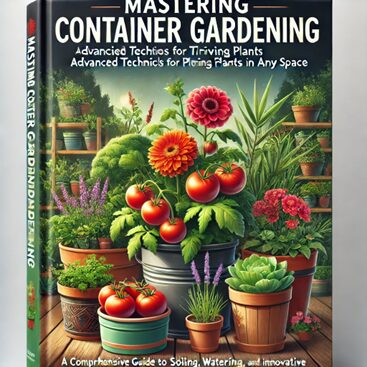How to Get Fresh Vegetables in an Apartment: 13 Best Tips
Affiliate Disclaimer
This post contains affiliate links. If you purchase through these links, I may earn a small commission at no additional cost to you. This helps support the creation of more helpful content. Thank you for your support!
Discover the Power of Container Gardening
You’ve finally done it.
You’ve stared into the soul of a sad, plastic-wrapped bell pepper that has more air miles than you do, and you’ve declared war. You’re tired of store-bought produce that tastes like a memory of a vegetable. You crave the explosive flavor of a truly fresh tomato, the crisp snap of lettuce grown by your own hand, and the deeply satisfying, borderline-smug feeling of telling your dinner guests, “Oh, this? I grew it myself.”
Welcome, friend, to the grand adventure of apartment gardening. You may be looking around your 500-square-foot kingdom, with its single, north-facing window, and thinking this is an impossible dream. It is not. The secret of how to get fresh vegetables in an apartment is not about owning acres of land; it’s about cleverness, a bit of science, and accepting that you will, inevitably, create a small plant graveyard. It’s a rite of passage. This guide contains 13 of the best tips to turn your urban dwelling into a tiny, edible jungle.
In This Article
- Choose Your Fighters Wisely
- Become a Sun Detective
- The Unbreakable Law: Pots Must Have Holes
- Use the Good Dirt (and Not Just… Dirt)
- When You Run Out of Floor, Go Up
- Fake the Sun with Furious, Focused Light
- The Astonishing Secret of the Vertical Harvest
- Master the Art of Not Drowning Your Plants
- Go Soil-Free with Hydroponics
- Feed Them (But Not Too Much)
- Make Free Plants from Your Existing Plants
- Don’t Try to Grow Everything at Once
- Join the Community of Fellow Plant Nerds

1. Choose Your Fighters Wisely & 2. Become a Sun Detective
Think of your edible plants as tiny, solar-powered divas. They demand at least six to eight hours of direct sun every day. Your first mission is to become a sun detective. For one full day, map the sunbeams as they travel across your apartment. This single act of espionage will determine your entire strategy.
- South-Facing Window: The Penthouse Suite. Best for sun-worshippers like cherry tomatoes or peppers.
- East-Facing Window: The Morning Bakery. Perfect for leafy greens like lettuce and spinach.
- West-Facing Window: The Afternoon Scorch-fest. Gets hot afternoon sun; monitor plants closely.
- North-Facing Window: The Moody Artist’s Loft. Least direct light; best for setting up a grow light.

4. Use the Good Dirt & 5. When You Run Out of Floor, Go Up
Do not scoop up random city dirt. Outdoor soil is too heavy, compacts like concrete, and can bring pests indoors. You need a light, fluffy potting mix from a garden center. For maximizing space, think vertically. Use shelves, hanging planters, and wall planters to multiply your growing area without sacrificing floor space.
8. Don’t Drown Your Plants & 9. Go Soil-Free
The #1 cause of death for indoor plants is overwatering. Use the “finger test”: stick your finger an inch into the soil. If it’s dry, water. If moist, walk away. Alternatively, if the thought of dirt gives you hives, consider hydroponics. Countertop systems grow plants in nutrient-rich water, meaning no mess and often faster growth.

12. Don’t Grow Everything at Once & 13. Join the Community
Don’t get over-ambitious and try to grow 20 different things. Start with two or three easy plants, like lettuce or mint, to build your confidence. And remember, you’re not alone. Join online communities on Reddit or Facebook. They are a goldmine of advice, encouragement, and troubleshooting for fellow apartment gardeners.


Leave a Reply